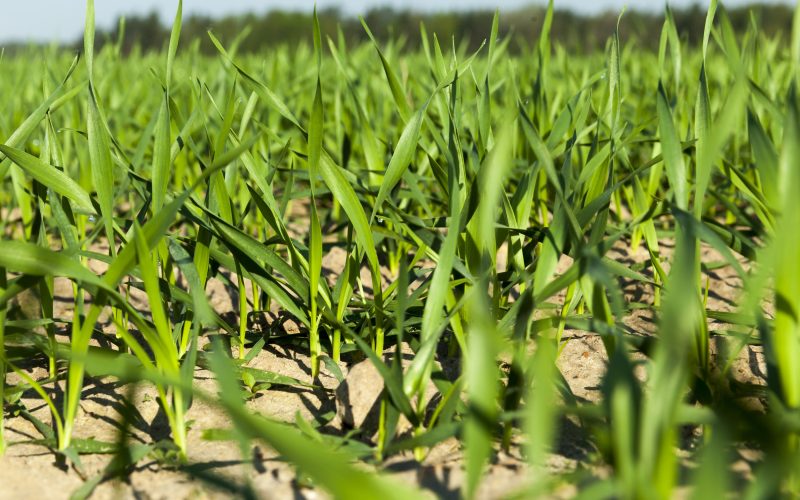Indian summer rains were ‘below-normal’ after being ‘normal’ or ‘above-normal’ for the last four years. The country as a whole received 820.0 mm rainfall during the June-September season this year, 94.4 percent of the long period average (LPA) of 868.8 mm, making it ‘below- normal’. The Indian Meteorological Department (IMD) had initially forecast a normal monsoon this year with rainfall over the country as a whole is most likely to be 96 percent of the long period average (LPA) with a model error of ± 4%, despite the looming threat of El Nino. A positive Indian Ocean Dipole and Madden Julian Oscillation helped to limit its impact, as expected by the IMD. The southwest monsoon this year was characterized by wide spatial and temporal variations. It was a sluggish start for the monsoon this year, with monsoon setting over Kerala on 8th June, seven days behind the normal date of 1st June, but covered the entire country by 2nd July, six days ahead of the normal date. Withdrawal is being delayed as well. As against the usual date of around 17th September, withdrawal commenced from west Rajasthan on 25th September, with a delay of eight days, and exited from the entire country four days after the normal date of 15th October.

Of the four months, July and September received rains 113 percent in excess of the respective LPA of 280.5 mm and 167.9 mm, while the core monsoon month of August recorded the least, 64 percent of the LPA of 254.9 mm. According to the IMD, monsoon precipitation in August across central India and south Peninsular region have also been the lowest in 122 years since 1901, making it one of the worst and most deficient monsoon months in history. The distribution of rainfall too showed considerable discrepancies. Out of the total 36 meteorological subdivisions, 3 subdivisions constituting 9% of the total area of the country received excess rainfall, 26 subdivisions received normal rainfall (73% of the total area) and 7 subdivisions (18% of the total area) received deficient season rainfall. The 7 meteorological subdivisions that got deficient rainfall are Nagaland, Manipur, Mizoram, and Tripura (NMMT), Gangetic West Bengal, Jharkhand, Bihar, East UP, south interior Karnataka, and Kerala. The regions which generally get good rains received less rain this season, while dry regions like West Rajasthan and Saurashtra-Kutch received bountiful. In the meantime, the Monsoon Core Zone, where agriculture mainly depends on rainfall, received 101 percent of LPA. Yet it was characterised by frequent breaks especially during the month of August.

Uneven and frequent breaks in monsoon affected the planting of various kharif crops, especially pulses. About 50 percent of the net cultivated area is monsoon-dependent and rainfed agriculture contributes to around 40 percent of the country’s total food production making a good monsoon extremely important. Following a delayed arrival and patchy monsoon in June, kharif sowing started off on a lacklustre note, but ended marginally up, following bountiful rains during July and September.
According to the data from the Department of Agriculture and Farmers Welfare, the final area covered under kharif crop as of September 29, 2023, stood at 1107.15 lakh ha compared to 1104.79 lakh ha a year ago. Area under the key kharif crop, rice, rose 7.68 lakh ha on year-on-year basis to 411.96 million ha. Sowing of rice, the major kharif food crop which began at a slower pace, gathered momentum only by July and ended 1.9 percent higher by September end.
Area under rice, increased in major rice-growing states of Uttar Pradesh, West Bengal, Punjab, Chhattisgarh, Bihar, Telangana, and Haryana, while a decline was seen in states such as Andhra Pradesh, Madhya Pradesh, Odisha and Assam. The government had set a target of 111 million tonnes for rice production in kharif 2023. Area under coarse cereals and sugarcane too registered a rise. The Coarse cereals were sown in 188.02 lakh ha this season compared to 184.77 lakh ha a year ago and the increase is predominantly due to higher area under maize, which grew by 3.18 lakh ha on year-on-year basis. In the meantime, area under pulses, oilseeds and cotton registered a decline by 4.1, 1.6 and 3.02 percent, respectively. However, among the oilseeds, area under soybean and castor showed a marginal rise 0.66 and 2.25 percent, respectively. The major pulses growing states of Maharashtra, Karnataka and Uttar Pradesh showed a decline in area while that in Rajasthan and Madhya Pradesh were up. Despite the pickup in overall kharif sowing, erratic and uneven distribution of southwest monsoon rains are raising concerns over yield and output. Also, crop damage has been reported in many key agricultural states either due to water logging or dry conditions due to shortfall in rains. A clear picture is yet to be obtained.
Now the focus has shifted to rabi sowing, which generally coincides with the arrival of Northeast monsoons. The IMD predicts that during the Northeast Monsoon Season 2023 (October to December) rainfall over south Peninsular India consisting of five meteorological subdivisions (Tamil Nadu, Puducherry, Coastal Andhra Pradesh, Rayalaseema, Kerala, and South Interior Karnataka) will most likely be normal (88-112% of LPA. Also, the met department is of the view that normal to above-normal rainfall is likely over many areas of northwest India and south peninsular India. However, northeast India, east central India, adjoining areas, and some areas of northwest India are likely to receive below normal rainfall. In the meantime, level of water stored in reservoirs are below the 10-year average level. According to the Central Water Commission (CWC), as of 19th October, water stored in 150 key reservoirs in the country amounted to 129.636 bcm, down 19% year-on-year and 8% lower than the 10-year average. The water level was 73% of the total live storage capacity. In the northern region, the water level was 80.9 percent of the live storage capacity, compared with 89 percent a year ago. In the western region, it was 88 percent of the capacity, against 96% a year ago. In the eastern region, the level was at 77.1 percent of the live storage capacity, compared with 78 percent a year ago. In the central region, the water level was 83 percent of the live storage capacity, against 88 percent a year ago. In the south, it was 48 percent, compared with 92 percent a year ago. Rabi cultivation generally depends on ground water and irrigation and late withdrawal of Southwest monsoon is expected to help rabi sowing.
With increasing chances of ‘super’ El Nino, concerns over foodgrain production linger. According to the US NOAA, from November to January, there is a 75-85 percent chance that it will be classified as a “strong” event, which is expected to leave a considerable impact on global weather patterns. However, IMD believes that positive factors, primarily the Indian Ocean Dipole and Madden-Julian Oscillation mitigated the impact of El Nino conditions to a certain extent, giving a near-normal northeast monsoon.
Rabi season is expected to contribute 1612 lakh tonnes of the total foodgrains production target of 3320 lakh tonnes in 2023-24 season. The Agriculture Ministry has maintained the target of achieving record wheat production of 114 million tonnes in 2023-24 season and the government also targets to bring 60 percent of the total wheat area of 30 million ha under the climate-resistant varieties with the challenge posed by El-Nino hanging on. Last year, extreme heat waves affected the quality and output of wheat and subsequently, in its final estimates for the year 2022-23, the government revised down the wheat production by 2.19 million tonnes to a record 110.55 million tonnes for the 2022-23 crop year than ended in June. The share of rabi pulses is seen at 181 lakh tonnes out of a total of 292 lakh tonnes and 145 lakh tonnes out of 440 lakh tonnes for oilseeds.







